These antioxidants, when applied topically, help protect your skin against oxidative damage caused by UV rays and pollution. (This damage looks like fine lines and dark circles IRL.) The blend also contains calming botanicals, such as rose and mimosa (a flowering plant), as well as liposomes, molecules that, according to Dr. Shamban, can help active ingredients more effectively penetrate below the top layer of your skin.
How Bazaar: The Elemis Pro-Collagen Marine Cream
It only took two weeks to visibly smooth my fine lines and up my skin’s hydration.
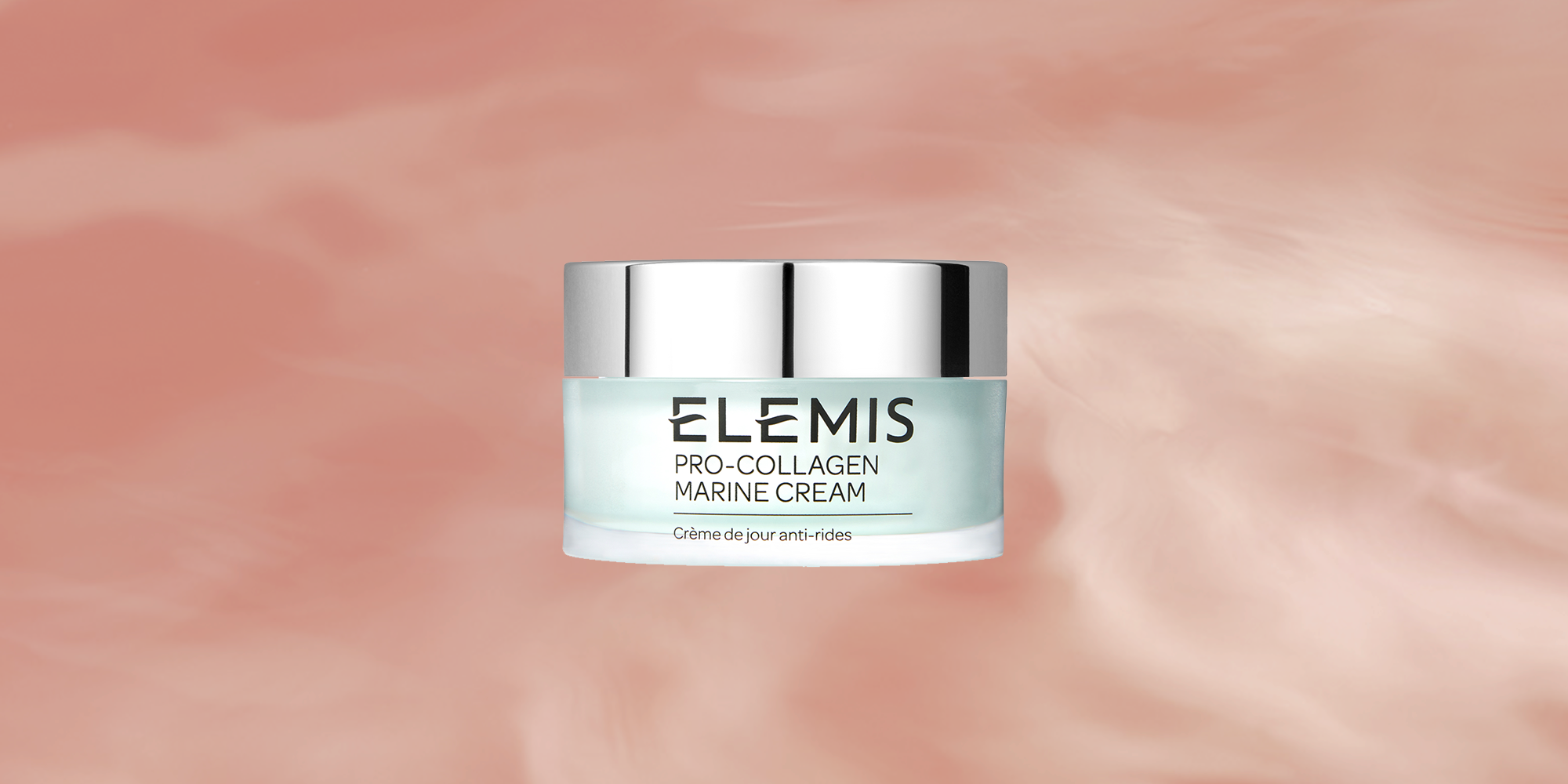
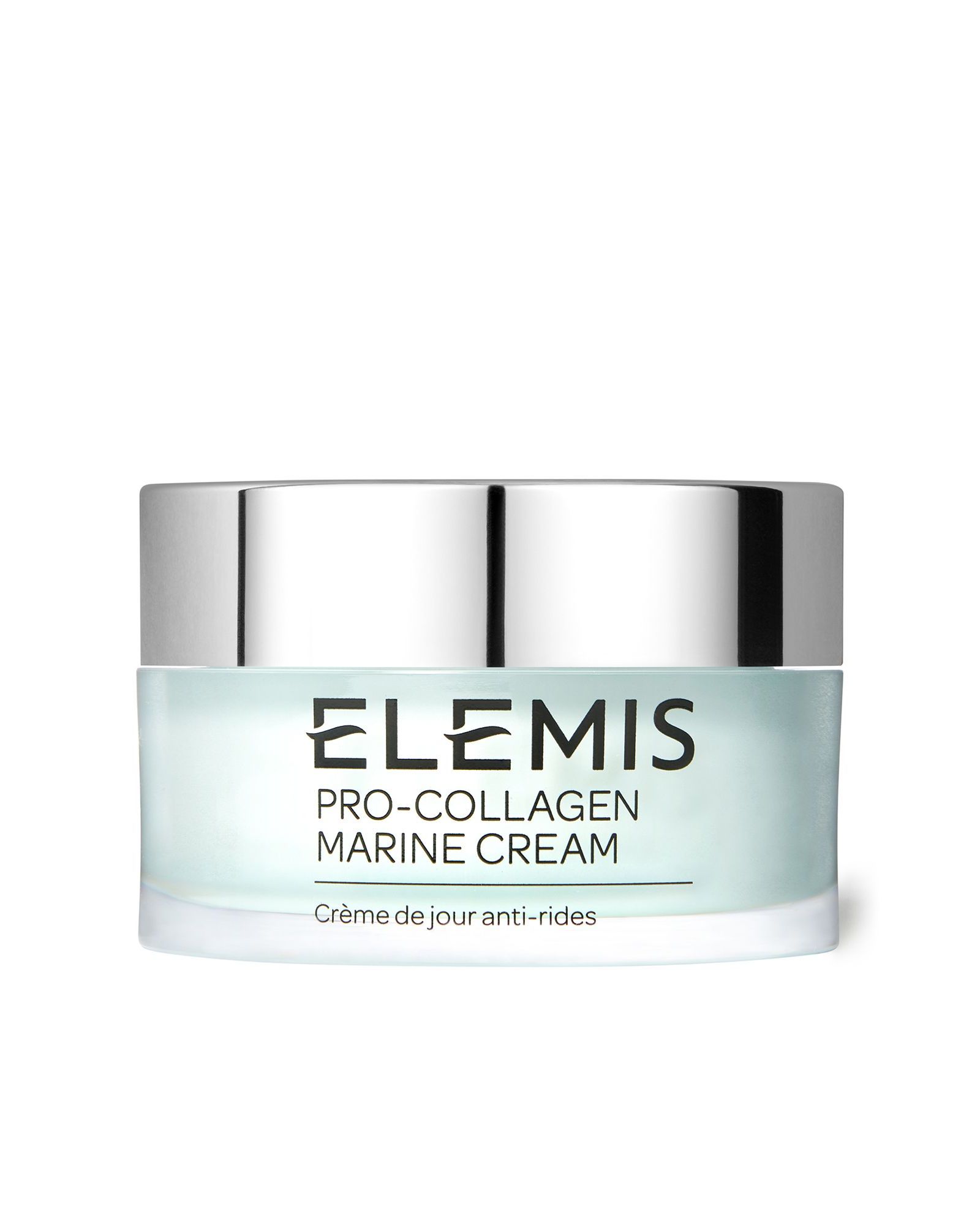
Sure, I’m a Cancer, but I didn’t realize that the sensitive nature associated with my star sign might extend to my complexion. My skin is prone to almost every concern, including breakouts, redness, dryness. On top of that, I’m noticing some (very) fine lines surrounding my right brow and my mouth. Perhaps it’s my Dorian Gray complex acting up. (Yep, I’m well aware that I’m striving for complexion perfection, which is basically impossible.) Or maybe it’s because I just turned 32—but lately, I’ve been laser-focused on tackling all of these concerns at once. So, I revisited one of my old skincare favorites: the Elemis Pro-Collagen Marine Cream.
I’ve tested hundreds of products as a beauty writer and Elemis has had some of my fave skincare for years. I was introduced to the brand when I was a beauty intern, and its lineup has never failed to help make my complexion look glowy and healthy. I know that I could always rely on the Pro-Collagen Marine Cream, specifically, to nurse my unpredictable skin back to a calmer, more supple state. Reintegrating the product into my routine felt like the obvious move. Its blend harnesses the power of the algae plant Padina pavonica for antioxidant support and hydration. Dermatologist Ava Shamban, M.D. says that plants that are exposed to a lot of light often contain a high, potent level of antioxidants “to protect themselves from the sun.”
These antioxidants, when applied topically, help protect your skin against oxidative damage caused by UV rays and pollution. (This damage looks like fine lines and dark circles IRL.) The blend also contains calming botanicals, such as rose and mimosa (a flowering plant), as well as liposomes, molecules that, according to Dr. Shamban, can help active ingredients more effectively penetrate below the top layer of your skin.
I added the Pro-Collagen Marine Cream to my daytime routine about three weeks ago. I’d massage it on right after applying my vitamin C serum, but before my sunscreen and eye cream. While it’s technically a day cream, it was so luxurious that I found myself reaching for it at night as well, serving as the final step to lock in the retinol and vitamin C serums I’d layered on right before.
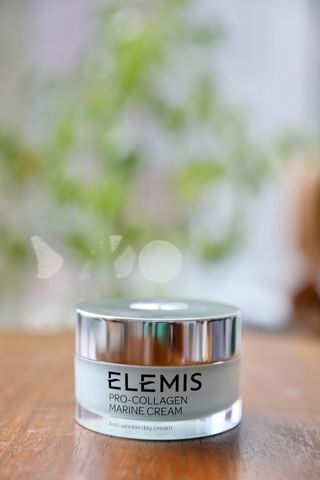
I loved how the cream practically melted into my skin, making it feel smooth and soft on contact—not to mention the natural glow it gave my complexion without a weighty, sticky feeling. At the top of each week, I complemented my nighttime lineup with the Elemis Pro-Collagen Tri-Acid Peel. Like the Marine Cream, the Tri-Acid Peel also uses nourishing Padina pavonica and chlorella (another nourishing algae), but factors in a blend of lactobionic, asiatic, and mandelic acids—ingredients that gently exfoliate.

It was around the two week mark that I started to notice improvements. They were slight changes, but changes all the same. The dry areas had all but disappeared, the random bouts of redness and irritation had become less frequent, and my skin held a subtle radiance that I could have sworn wasn’t there a few weeks prior. My laugh lines and the lines above my right brow, while still present, were less visibly noticeable—or anyway, I wasn’t fixating on them anymore, so that counts as progress in my book.
This cream targets areas where stress is most visible. The formula creates a protective matrix to seal in hydration and works throughout the night to restore the natural balance to stressed-looking skin.
Overview of Elemis Skincare
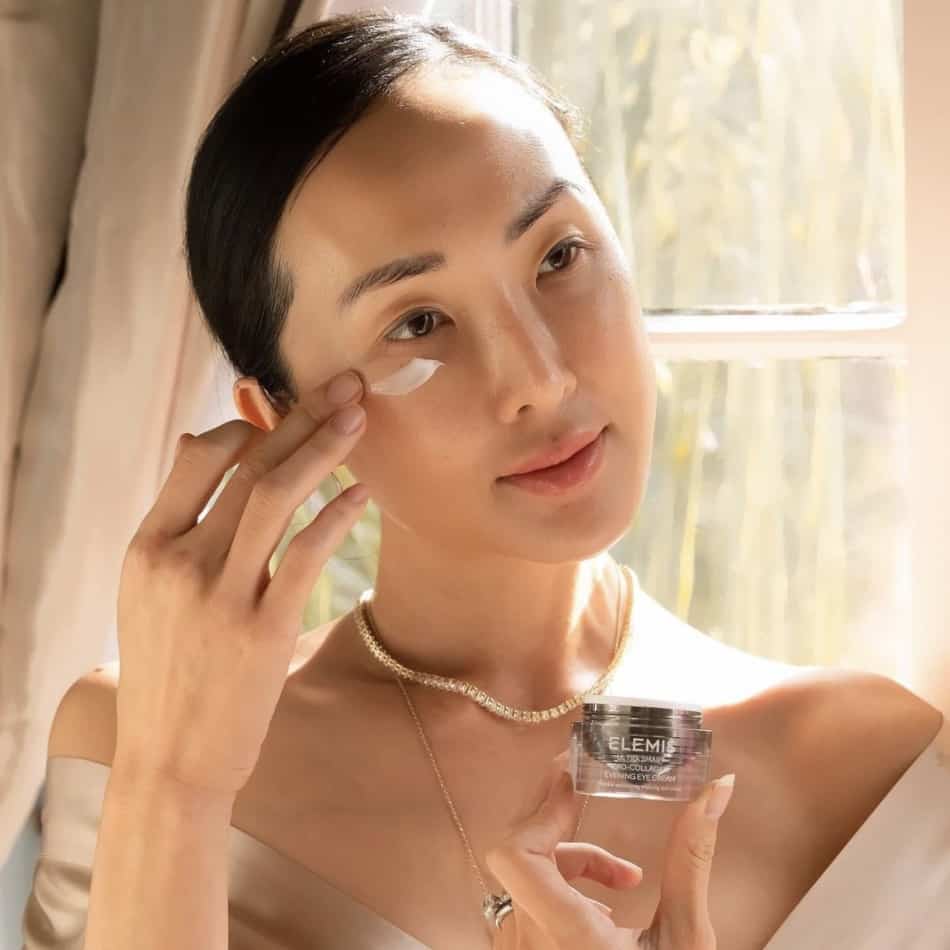
Elemis was founded in 1989 by Sean C. Harrington, Noella Gabriel, and Oriele Frank. Their vision was to create a skincare brand as close to nature as possible by pursuing a holistic approach. All products are developed in the Elemis Innovation Hub in London and manufactured in England.
The company promises to prioritize safety and efficacy through active plant extracts. Elemis skincare undergoes third-party testing and has banned over 2000+ potentially harmful ingredients.
Elemis works with several charitable organizations, including one notable partnership with Women for Women International. The organization helps female survivors of war reclaim their lives by providing resources for learning and developing skills to get their families out of poverty.
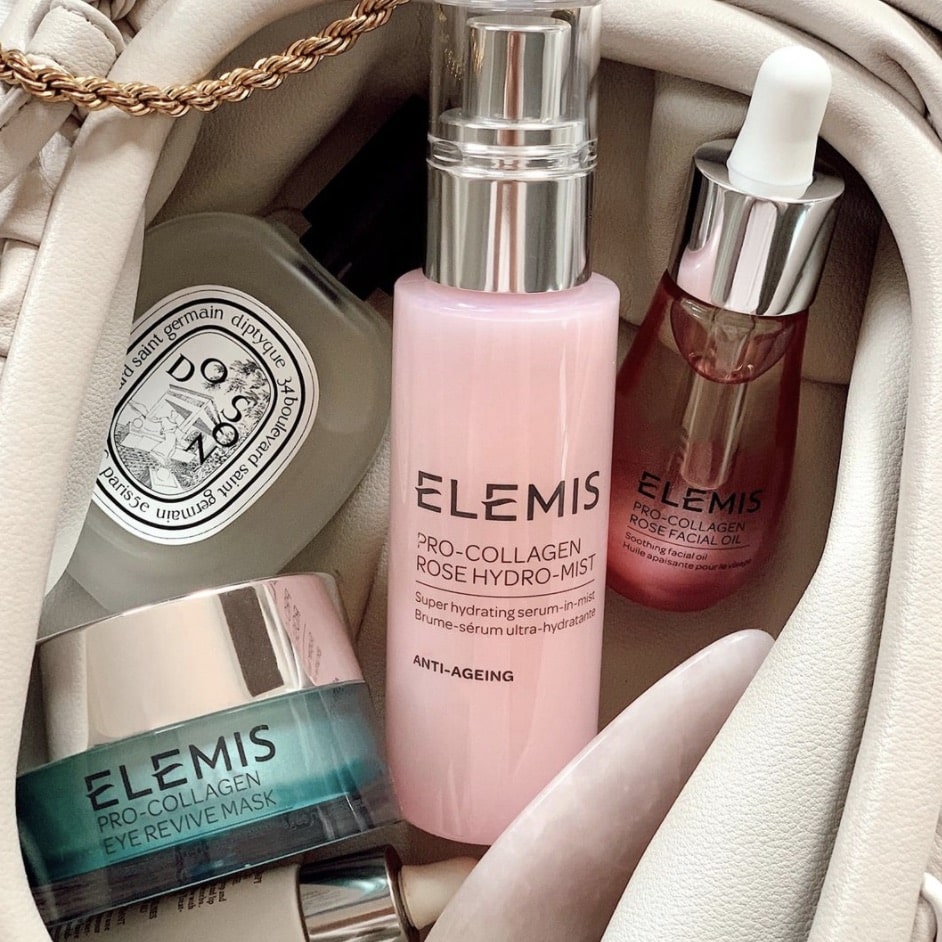
This Elemis skincare review will now look at the pros and cons of the brand.
Pros
- Variety of cleansers, toners, moisturizers, serums, and more
- No toxic ingredients such as artificial dyes, aluminum, parabens, etc.
- Sustainably-sourced natural plant extracts
- Products undergo third-party testing
- Proven results from customers and reports of helpful customer service
Cons
- Some customers experienced allergic reactions
- Animal-testing
Theobroma means “food of the gods” in Greek though probably “treat of the people” would be more spot on. The cacao fruits and especially the seeds in it need no introduction as everyone knows them as the magical raw material of the magical sweet treat, chocolate (the flavour is composed of more than 1200(!) substances, and the exact chemical nature of it is not really understood, so it’s indeed magic. :)).
Elemis pro collagen marine reviews
Good old water, aka H2O. The most common skincare ingredient of all. You can usually find it right in the very first spot of the ingredient list, meaning it’s the biggest thing out of all the stuff that makes up the product.
It’s mainly a solvent for ingredients that do not like to dissolve in oils but rather in water.
Expand to read more
Once inside the skin, it hydrates, but not from the outside – putting pure water on the skin (hello long baths!) is drying.
One more thing: the water used in cosmetics is purified and deionized (it means that almost all of the mineral ions inside it is removed). Like this, the products can stay more stable over time.
- A natural moisturizer that’s also in our skin
- A super common, safe, effective and cheap molecule used for more than 50 years
- Not only a simple moisturizer but knows much more: keeps the skin lipids between our skin cells in a healthy (liquid crystal) state, protects against irritation, helps to restore barrier
- Effective from as low as 3% with even more benefits at higher concentrations up to 20-40% (around 10% is a good usability-effectiveness sweet spot)
- High-glycerin moisturizers are awesome for treating severely dry skin
An oily kind of ingredient that can magically blend with water all by itself. This is called self-emulsifying and SE in its name stands for that.
The difference between “normal” Glyceryl Stearate and this guy is that the SE grade contains a small amount of water-loving soap molecules, such as sodium stearate. This increases Glyceryl Stearate’s affinity for water and gives it stronger emulsifying abilities.
Expand to read more
Other than that, it’s a nice emollient that gives a smooth and soft appearance to the skin.
Jojoba is a drought resistant evergreen shrub native to South-western North America. It’s known and grown for jojoba oil, the golden yellow liquid coming from the seeds (about 50% of the weight of the seeds will be oil).
At first glance, it seems like your average emollient plant oil: it looks like an oil and it’s nourishing and moisturizing to the skin but if we dig a bit deeper, it turns out that jojoba oil is really special and unique: technically – or rather chemically – it’s not an oil but a wax ester (and calling it an oil is kind of sloppy).
Expand to read more
So what the heck is a wax ester and why is that important anyway? Well, to understand what a wax ester is, you first have to know that oils are chemically triglycerides: one glycerin + three fatty acids attached to it. The fatty acids attached to the glycerin vary and thus we have many kinds of oils, but they are all triglycerides. Mother Nature created triglycerides to be easily hydrolyzed (be broken down to a glycerin + 3 fatty acid molecules) and oxidized (the fatty acid is broken down into small parts) – this happens basically when we eat fats or oils and our body generates energy from it.
Mother Nature also created wax esters but for a totally different purpose. Chemically, a wax ester is a fatty acid + a fatty alcohol, one long molecule. Wax esters are on the outer surface of several plant leaves to give them environmental protection. 25-30% of human sebum is also wax esters to give us people environmental protection.
So being a wax ester results in a couple of unique properties: First, jojoba oil is extremely stable. Like crazy stable. Even if you heat it to 370 C (698 F) for 96 hours, it does not budge. (Many plant oils tend to go off pretty quickly). If you have some pure jojoba oil at home, you should be fine using it for years.
Second, jojoba oil is the most similar to human sebum (both being wax esters), and the two are completely miscible. Acne.org has this not fully proven theory that thanks to this, jojoba might be able to “trick” the skin into thinking it has already produced enough sebum, so it might have “skin balancing” properties for oily skin.
Third, jojoba oil moisturizes the skin through a unique dual action: on the one hand, it mixes with sebum and forms a thin, non-greasy, semi-occlusive layer; on the other hand, it absorbs into the skin through pores and hair follicles then diffuses into the intercellular spaces of the outer layer of the skin to make it soft and supple.
On balance, the point is this: in contrast to real plant oils, wax esters were designed by Mother Nature to stay on the surface and form a protective, moisturizing barrier and jojoba oil being a wax ester is uniquely excellent at doing that.
The unsaponifiable part of sunflower oil. It’s the small part of the oil that resists saponification, the chemical reaction that happens during soap making.
If you want to understand saponification more, here is a short explanation (if not, we understand, just skip this paragraph): Oils are mostly made up of triglyceride molecules (a glycerin + three fatty acids attached to it) and during the soap making process a strong base splits the triglyceride molecule up to become a separate glycerin and three soap molecules (sodium salts of fatty acids). The fantastic Labmuffin blog has a handy explanation with great drawings about the soap-making reaction.
Expand to read more
So, the triglyceride molecules are the saponifiable part of the oil, and the rest is the unsaponifiable part. In the case of sunflower oil, it’s about 1.5-2% of the oil and consists of skin nourishing molecules like free fatty acids (fatty acids not bound up in a triglyceride molecule, it contains mainly (48-74% according to its spec) barrier building linoleic acid), tocopherol (vitamin E) and sterols.
According to manufacturer’s info, it’s an oily ingredient that not only simply moisturizes the skin but also has great lipid-replenishing and soothing properties. The clinical study done by the manufacturer (on 20 people) found that a cream with 2% active increases skin moisturization by 48.6% after 1 hour, and 34.2% after 24 hours. Applied twice daily for 4 weeks, the study participants had a major improvement in skin dryness, roughness, and desquamation (skin peeling) parameters.
A clear, colorless, almost odorless oil that spreads nicely and easily and gives a velvet dry skin feel. It is good friends with sunscreen agents and helps to solubilize them. Also, it makes sunscreens feel lighter and spread easier.
An emollient ester with a rich and creamy but non-greasy skin feel. It makes skin supple and protects dry skin.
Probably the most common silicone of all. It is a polymer (created from repeating subunits) molecule and has different molecular weight and thus different viscosity versions from water-light to thick liquid.
As for skincare, it makes the skin silky smooth, creates a subtle gloss and forms a protective barrier (aka occlusive). Also, works well to fill in fine lines and wrinkles and give skin a plump look (of course that is only temporary, but still, it’s nice). There are also scar treatment gels out there using dimethicone as their base ingredient. It helps to soften scars and increase their elasticity.
Expand to read more
As for hair care, it is a non-volatile silicone meaning that it stays on the hair rather than evaporates from it and smoothes the hair like no other thing. Depending on your hair type, it can be a bit difficult to wash out and might cause some build-up (btw, this is not true to all silicones, only the non-volatile types).
An extremely common multitasker ingredient that gives your skin a nice soft feel (emollient) and gives body to creams and lotions. It also helps to stabilize oil-water mixes (emulsions), though it does not function as an emulsifier in itself. Its typical use level in most cream type formulas is 2-3%.
It’s a so-called fatty alcohol, a mix of cetyl and stearyl alcohol, other two emollient fatty alcohols. Though chemically speaking, it is alcohol (as in, it has an -OH group in its molecule), its properties are totally different from the properties of low molecular weight or drying alcohols such as denat. alcohol. Fatty alcohols have a long oil-soluble (and thus emollient) tail part that makes them absolutely non-drying and non-irritating and are totally ok for the skin.
A light emollient ester (C8-10 fatty acids connected to C12-18 fatty alcohols) that absorbs quickly and leaves a dry but silky finish on the skin. In terms of skin feel, it is similar to Dicaprylyl Carbonate, another commonly used light emollient.
A helper ingredient that functions as a film-forming polymer (big molecule from repeated subunits).
It usually comes to the formula as part of a thickener-emulsifier trio paired with Polyisobutene and Polysorbate 20. The three togeather have excellent thickening properties with remarkable emulsifying-stabilising abilities. They also have a nice silicone feel with glide-on spreading.
It’s pretty much the current IT-preservative. It’s safe and gentle, but even more importantly, it’s not a feared-by-everyone-mostly-without-scientific-reason paraben.
It’s not something new: it was introduced around 1950 and today it can be used up to 1% worldwide. It can be found in nature – in green tea – but the version used in cosmetics is synthetic.
Expand to read more
Other than having a good safety profile and being quite gentle to the skin it has some other advantages too. It can be used in many types of formulations as it has great thermal stability (can be heated up to 85°C) and works on a wide range of pH levels (ph 3-10).
It’s often used together with ethylhexylglycerin as it nicely improves the preservative activity of phenoxyethanol.
It’s the most commonly used version of pure vitamin E in cosmetics. You can read all about the pure form here. This one is the so-called esterified version.
According to famous dermatologist, Leslie Baumann while tocopheryl acetate is more stable and has a longer shelf life, it’s also more poorly absorbed by the skin and may not have the same awesome photoprotective effects as pure Vit E.
A common multi-tasker fatty acid. It makes your skin feel nice and smooth (emollient), gives body to cream type products and helps to stabilize water and oil mixes (aka emulsions).
Exactly what it sounds: nice smelling stuff put into cosmetic products so that the end product also smells nice. Fragrance in the US and parfum in the EU is a generic term on the ingredient list that is made up of 30 to 50 chemicals on average (but it can have as much as 200 components!).
If you are someone who likes to know what you put on your face then fragrance is not your best friend – there’s no way to know what’s really in it.
Expand to read more
Also, if your skin is sensitive, fragrance is again not your best friend. It’s the number one cause of contact allergy to cosmetics. It’s definitely a smart thing to avoid with sensitive skin (and fragrance of any type – natural is just as allergic as synthetic, if not worse!).
We don’t have description for this ingredient yet.
A helper ingredient that helps to make the products stay nice longer, aka preservative. It works mainly against fungi.
It’s pH dependent and works best at acidic pH levels (3-5). It’s not strong enough to be used in itself so it’s always combined with something else, often with potassium sorbate.
It’s one of the most commonly used thickeners and emulsion stabilizers. If the product is too runny, a little xanthan gum will make it more gel-like. Used alone, it can make the formula sticky and it is a good team player so it is usually combined with other thickeners and so-called rheology modifiers (helper ingredients that adjust the flow and thus the feel of the formula). The typical use level of Xantha Gum is below 1%, it is usually in the 0.1-0.5% range.
Btw, Xanthan gum is all natural, a chain of sugar molecules (polysaccharide) produced from individual sugar molecules (glucose and sucrose) via fermentation. It’s approved by Ecocert and also used in the food industry (E415).
We don’t have description for this ingredient yet.
A polymer (big molecule from repeated subunits) that’s used as a gloss improver for lipsticks and lipglosses. Its stickiness also helps lip products to stay on longer.
Combined with polyacrylate-13 and polysorbate 20, it forms a very effective tickener-emulsifier trio.
Theobroma means “food of the gods” in Greek though probably “treat of the people” would be more spot on. The cacao fruits and especially the seeds in it need no introduction as everyone knows them as the magical raw material of the magical sweet treat, chocolate (the flavour is composed of more than 1200(!) substances, and the exact chemical nature of it is not really understood, so it’s indeed magic. :)).
As for skincare, cocoa butter counts as a rich emollient that can moisturize and nourish even the driest skin (think chapped hands or lips). It’s solid at room temperature and melts nicely when you smear it on. It’s loaded with good-for-the-skin things: it contains fatty acids, mainly oleic (35%), stearic (34%), and palmitic (25%) and it also has antioxidant vitamin E and polyphenols.
Expand to read more
An ex-vivo (made on human skin but not on real people) study examined the cocoa polyphenols and found that 0.5-0.75% of them improved skin tone and elasticity and had a similarly positive impact on GAGs (important natural moisturizing factors in the skin) and collagen synthesis than a commercial high-end moisturizer (it was an Estee Lauder one).
All in all, cocoa butter is a goodie, especially for very dry skin.
It’s one of those things that help your cosmetics not to go wrong too soon, aka a preservative. It’s not a strong one and doesn’t really work against bacteria, but more against mold and yeast. To do that it has to break down to its active form, sorbic acid. For that to happen, there has to be water in the product and the right pH value (pH 3-4).
But even if everything is right, it’s not enough on its own. If you see potassium sorbate you should see some other preservative next to it too.
I know the price will put a lot of people off but if you have been considering a skincare splurge or you’ve been wanting to try out this particular product, this year’s the time to do it. With its embossed silver lid and velvet pouch, the 10th anniversary packaging is to die for and, at 100ml, it’s twice the size of the regular white-packaged pots. You’ll find it in fancy spas (mine came from the gorgeous spirit one spa at the Radisson Blu in Galway), but I’ve also spotted it on millies.ie for €145, versus €105 for the regular 50ml tub.
Elemis Pro-Collagen Marine Cream Review: AMAZEBALLS

Considering it celebrates its 10th anniversary this year, I’m kinda surprised it’s taken me so long to get around to trialling the number 1 selling face cream from Elemis. Pro-Collagen Marine Cream is the brand’s hero product with one selling every minute around the globe.
It’s amassed quite the legion of fans over the past ten years too, scooping no less than 21 beauty awards in the process.
The marine ingredients are the key selling point – the cream contains no less than three different types of seaweed – which prompts inevitable comparisons with Creme de la Mer.
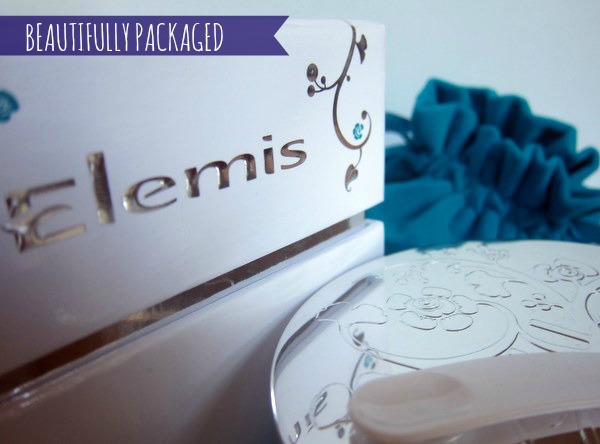
Both are cult skincare classics – very expensive, and very, very high-end. But unlike CDLM, who don’t publish much in the way of clinical data, Elemis have lots of proven research to back up the claims for their cream.
Advertised
And very impressive it is, too. Independent trials found that after just two weeks use, participants saw up to 78% wrinkle depth reduction and a 45% increase in skin hydration. Two weeks is brilliant – with a lot of products you have to wait up to 12 weeks to see any visible results (by which time many of us have given up and moved on to something else).
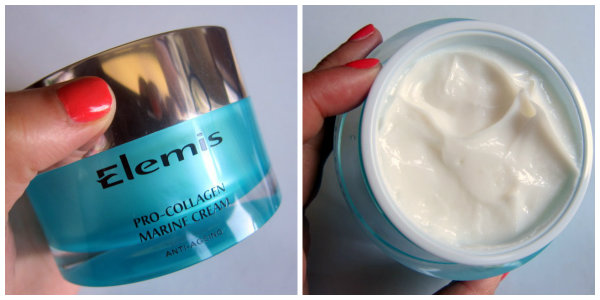
I’ve been using it for exactly two weeks now myself and while my results haven’t been quite that dramatic, I’m pretty feckin’ pleased with them regardless. The fine lines on my forehead aren’t as obvious, my skin feels more plumped up and hydrated and I think my skin seems to be holding on to moisture better throughout the day. My (combo oily/dehydrated and blemish prone!) face just loves this stuff.
I was worried about using a rich, anti-ageing cream in summer, when I like a lighter texture on my skin. But Pro-Collagen Marine Cream surprised me – the texture is lovely and lightweight, despites its seriously heavyweight credentials. It’s a gel-cream that feels lovely and refreshing on my skin, and is rapidly absorbed.
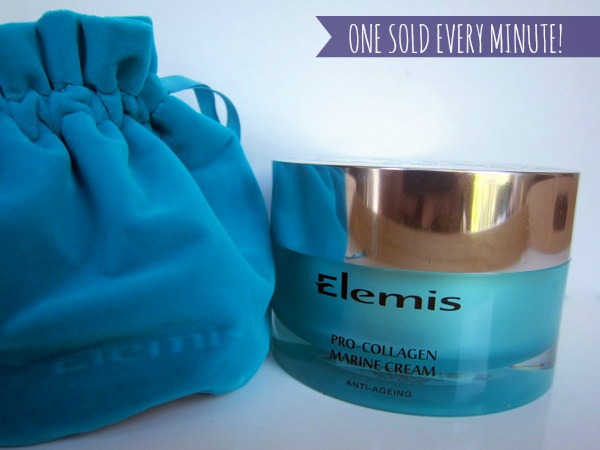
Advertised
I know the price will put a lot of people off but if you have been considering a skincare splurge or you’ve been wanting to try out this particular product, this year’s the time to do it. With its embossed silver lid and velvet pouch, the 10th anniversary packaging is to die for and, at 100ml, it’s twice the size of the regular white-packaged pots. You’ll find it in fancy spas (mine came from the gorgeous spirit one spa at the Radisson Blu in Galway), but I’ve also spotted it on millies.ie for €145, versus €105 for the regular 50ml tub.
Budget can’t quite stretch to this right now? Check out Lynnie’s post on how to score yourself some Elemis for free, gratis and for nothing!